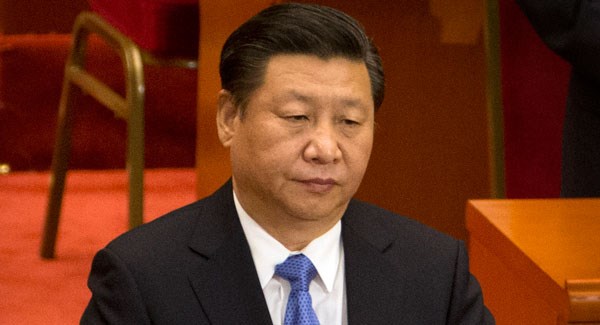China is an expansionist nation with a supremacist ideology which it calls its own version of communism. Its continued muscle flexing in the South China Sea, and adventurism in the Indian Ocean as well, are all indicative of a desperation to turn China into the most influential power in the Indo-Pacific region, perhaps even in the world. However, a rather undeliberated subject is that of Chinese interests in Taiwan. And by interests, it can be safely said that China has the ultimate goal to invade Taiwan, strip it off the autonomy and sovereignty that it enjoys, and take complete control of the Taiwan Strait.
Xi Jinping will be leading the Chinese Communist Party’s centenary celebrations in 2021, hundred years after the party was first founded in 1921 with a mere 50 members. Jinping’s aim is to take control over Taiwan before 2021. As such, an unofficial term with respect to Taiwan is again being brought into regular use, i.e., Mission 2020. This sets a deadline for the People’s Republic of China to amalgamate Taiwan into its territory.
In December, the Taiwanese defence ministry reported “irregular” patrols by People’s Liberation Army warships in the western side of the strait. This year, these patrols have become “routine.” The ministry said the island’s forces in conjunction with the US navy had “effectively monitored the situations and movements around the Taiwan Strait by means of its air and naval mechanisms to ensure national security and regional stability”.
Increased Chinese military activity in the Taiwan Strait can be a precursor to Xi Jinping announcing a full-fledged invasion. Reports suggest that Jinping’s motives with regards to Taiwan would have caught the world’s attention, however, the Hong Kong protests are proving to be an impediment in the path of China’s dream of conquering Taiwan. Even if China tries to downplay these protests, it is very well aware that China’s image has been severely dented, not only among the world community, but also perhaps its own citizens.
The former ‘Republic of China’ (ROC), after the surrender of Japan in 1945, had taken control over Taiwan. However, the Chinese Civil War caused immense loss of mainland territory for the ROC to the Communist Party of China, and the ROC as a result remained limited to Taiwan and other smaller islands. The ROC is not a member of the United Nations, as it was replaced by People’s Republic of China (PRC) in 1971. Taiwan is claimed by PRC to this day, and Xi Jinping’s dream of amalgamation of it with the PRC in not new.
Nevertheless, Taiwan wasn’t all on its own all this while. First, The Sino-American Mutual Defence Treaty, effective from 1955–1979 was in place. It essentially prevented the People’s Republic of China from taking over the island of Taiwan in this effective period. This Treaty was later terminated in 1979. Post this termination, the US Congress brought in an Act, called the Taiwan Relations Act which defined the US’ relations with the state of Taiwan. This Act does not recognize either the PRC or the ROC as claimants to Taiwan, but rather refers to the “governing authorities on Taiwan.” This gives Donald Trump much flexibility to now recognize the ROC and dismiss PRC’s claim over Taiwan. The act states that “the United States will make available to Taiwan such defence articles and defence services in such quantity as may be necessary to enable Taiwan to maintain a sufficient self-defence capabilities”
Like on all other counts, invading Taiwan may not be as simple and easy as Jinping thinks it to be. The United States, under Donald Trump, is proving to be a serious hurdle in all of China’s expansionist ambitions. Historically, the United States has maintained a neutral position with regards to Taiwan and its sovereignty, more so siding with China’s version of Taiwan being a constituent of the Chinese Republic.
However, with Donald Trump as President, that equation has certainly dynamically changed. Only recently, Trump gave his assent to selling 66 F-16 Fighter jets to Taiwan. Further, the sale of 108 M-1 Abram Tanks to Taiwan, arguably the best in the world, has also been cleared. Armed sales of such proportions have been revived after a prolonged period of virtually no military sales to Taiwan. Needless to say, with these decisions, Trump has China running around like a headless chicken.
Given the kind of posturing which the US is undertaking with regards to Taiwan, China must rethink its ‘Mission 2020’. Although the US has no legal obligations to help Taiwan militarily in the event of a confrontation with China, Donald Trump is unlikely to allow a Chinese walkover upon Taiwan. The Trump-Tsai call of 2nd December 2016 was a historical event, as Trump became the first President after 1979 to hold a telephonic conversation with his ROC counterpart. Moreover, it is not as though the US has no diplomatic relations with Taiwan. In fact, a de facto US embassy is also operational at Taipei.
The United States, under Donald Trump has made life a living hell for the ambitious Xi Jinping. Jinping is keen to script a legacy for himself while still in office. There are three ways he could do so: (i) Invasion and amalgamation of the South China Sea Islands and nations, (ii) Invasion of Taiwan and (iii) Defeating the United States in a military conflict. The last option practically seems impossible. As such, the first two options are the only ones available with Xi to script history. As of today, none of them seem a possibility.
